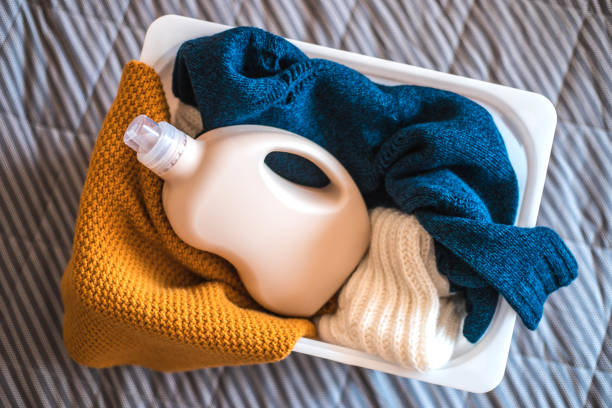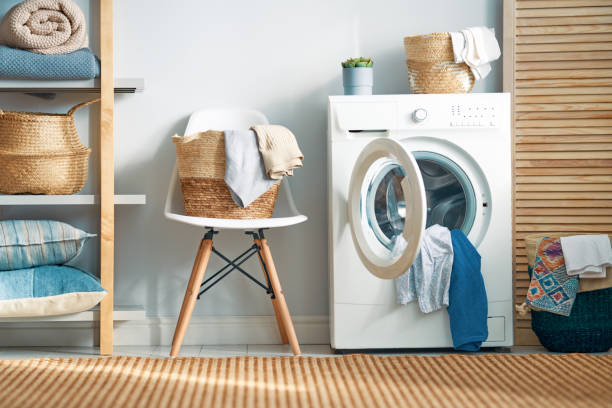Caring for your clothes properly can significantly extend their lifespan, saving you money and helping the environment. By adopting a few straightforward habits, you can ensure your garments stay in top condition for years to come. This article will guide you through essential tips on laundry, storage, and daily maintenance to maximize the longevity of your clothes.
Laundry Care

Proper laundry care begins with understanding the care labels attached to your clothes. These labels contain critical information regarding washing temperatures, drying methods, and ironing instructions. Always sort your clothes by color and fabric type to prevent bleeding and damage. Use a gentle detergent suitable for the fabric type and avoid overloading your washing machine, which can cause wear and tear on the garments.
- Sort clothes by color and fabric type.
- Use a gentle detergent.
- Follow care label instructions.
Avoid using bleach unless absolutely necessary, as it can weaken fabric fibers over time. Instead, opt for oxygen-based bleaches or natural alternatives like baking soda. When it comes to drying, air drying is often the best option, especially for delicate fabrics. If using a tumble dryer, select a low heat setting to reduce the risk of shrinkage and fabric damage.
Proper Storage
How you store your clothes can greatly influence their longevity. Always use hangers that suit the garment type; wooden or padded hangers work best for heavier items like suits and coats, while slimline hangers are ideal for lightweight tops and dresses. Fold heavier items, such as sweaters, to avoid stretching the fabric.
Keep your wardrobe clean and free from pests by regularly vacuuming and using moth repellents. Avoid storing clothes in direct sunlight or damp areas, as these conditions can cause fading and mildew. For valuable or off-season garments, consider using garment bags to provide an extra layer of protection.
Stain Treatment
Stains are inevitable but can be managed effectively with prompt action and the right treatment. Always blot the stain gently with a clean cloth to remove excess liquid before applying any stain remover. Test the remover on a small, inconspicuous area first to ensure it does not damage the fabric.
The Stain Removal Process
For common stains like food and drink, apply a small amount of dish detergent mixed with water and blot gently. For tougher stains such as grease or ink, you may need a specialized stain remover. Here is a simple step-by-step list for treating stains:
- Blot excess liquid with a clean cloth.
- Apply a suitable stain remover.
- Gently blot the stain without rubbing.
- Rinse with cold water and launder as usual.
Always follow up with a proper wash according to the garment’s care label, and never use hot water on stains as it can set them permanently.
Maintenance and Repairs
Regular maintenance can keep your clothes looking new and extend their life. Check for loose threads, missing buttons, or small tears and address these issues promptly. Investing a little time in basic repairs like sewing a button or mending a small tear can prevent more significant damage and save you from having to replace the garment prematurely.
For more complex repairs, such as a broken zipper or a larger tear, consider visiting a professional tailor. Regularly inspect your clothes for wear and tear, especially in high-stress areas like seams and cuffs, to catch problems early. Incorporating these small maintenance habits into your routine will help preserve your favorite pieces for longer.
Routine Cleaning and Refreshing
In addition to regular laundry, it’s essential to keep your clothes fresh between wears. Avoid over-washing garments as frequent washing can cause fabric to degrade. Instead, consider spot cleaning smaller areas and airing out clothes to remove odors. Using a steamer can also help to remove wrinkles and refresh the fabric without the need for a full wash.
For items like jeans and sweaters that don’t require frequent laundering, a good airing out or a light hand wash can preserve the fabric. Keep your clothes smelling fresh by storing them with lavender sachets or cedar blocks. Regularly refreshing your wardrobe with these simple techniques can keep your clothes looking and smelling new without the wear and tear of constant washing.
Conclusion
Properly caring for your clothes goes beyond just washing and drying; it involves thoughtful storage, prompt stain treatment, regular maintenance, and routine refreshing. By adopting these habits, you can extend the life of your garments, keep them looking their best, and ultimately save money. With a little care and attention, your clothes can remain in excellent condition for many years.
FAQs
How often should I wash my clothes?
The frequency of washing depends on the type of garment and how often it is worn. For instance, undergarments and activewear should be washed after every wear, while jeans and sweaters can go several wears between washes.
Can I use fabric softener on all my clothes?
Fabric softeners can be beneficial but are not suitable for all fabrics. Avoid using them on moisture-wicking sportswear, towels, and certain delicate fabrics, as they can reduce the fabric’s effectiveness and softness over time.
What is the best way to store off-season clothes?
Store off-season clothes in a cool, dry place using breathable garment bags. Ensure they are clean before storage to prevent stains from setting. Adding moth repellents like cedar blocks can further protect your clothes from pests.
How do I prevent color bleeding in the wash?
To prevent color bleeding, always wash dark and bright colors separately from whites and light colors. Using cold water can help minimize color transfer, and adding a tablespoon of salt to the wash water can help set the colors.
Are there natural alternatives to commercial stain removers?
Yes, several natural alternatives can be effective for stain removal, including baking soda, white vinegar, and lemon juice. These can be combined with water to create a gentle yet effective stain-removing solution for many types of stains.
